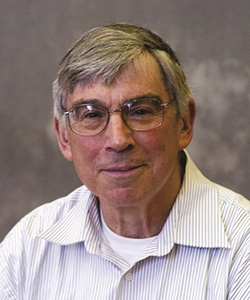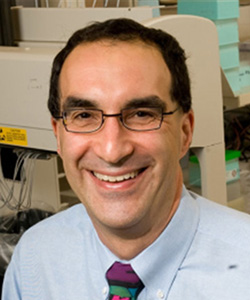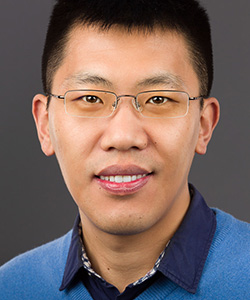
Leifu Chang
Associate Professor
Department of Biological Sciences
The Leifu Chang Research Group focuses on cryo-EM and the biochemical reconstitution of large protein and protein-nucleic acid complexes to determine structure, function, and regulation. Currently, Dr. Chang and his research group are interested in CRISPR-Cas systems and cell-cycle regulation.
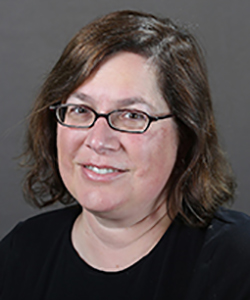
Barbara Golden
Professor
Department of Biochemistry
The focus of our research is the structure and folding of catalytic RNAs. Unlike proteins, RNAs have a highly charged backbone, only 4 different monomeric units (compared to the 20 amino acids that make up proteins) and functional groups that are largely sequestered within the majorand minor grooves of the double helix. Yet, in the presence of magnesium ion, many RNA molecules have stable, globular, tertiary structures that support biological catalysis. To understand how these molecules fold and function, we are investigating RNA structures by X-ray crystallography.
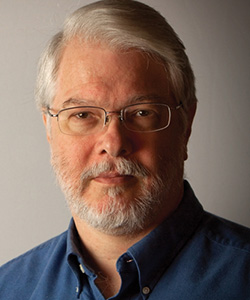
Michael Gribskov
Professor
Department of Biological Sciences
Biological systems are controlled by extremely complex networks of interactions between genes, RNAs, proteins, and small molecules. The Computational Genomics & Systems Biology group investigates these complex interactions using computational analysis of genomics and systems biology data.
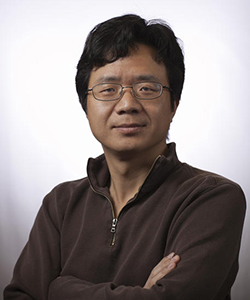
Wen Jiang
Professor
Department of Biological Sciences
Our group is interested in structural biology of viruses, large macromolecular complexes, and membrane proteins. The major tool we use is electron cryo-microscopy (cryo-EM), an emerging technique that has seen dramatic progresses and expansion of the field recently.
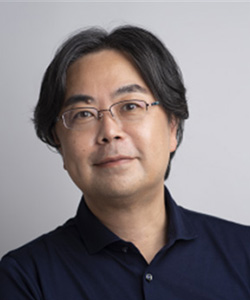
Daisuke Kihara
Professor
Department of Biological Sciences; Department of Computer Science
Our research area is bioinformatics; bioinformatics is beginning to have a large impact on the field of biology now that more and more structure, sequence, gene expression data, and pathway data have become available in the past decade.
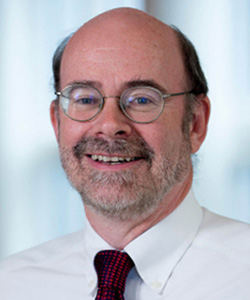
Richard Kuhn
The Trent and Judith Anderson Distinguished Professor in Science
Department of Biological Sciences
My laboratory is interested in the replication, assembly and structure of RNA viruses with an emphasis on their interactions with the host. Our molecular studies utilize cutting edge tools in functional genomics, high throughput systems technologies, cell biology, and structural biology.
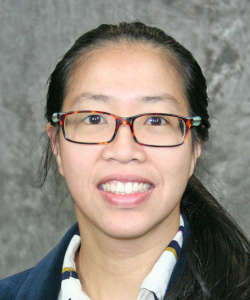
Jianing Li
Associate Professor
Borch Department of Medicinal Chemistry and Molecular Pharmacology
We focus on the innovation of multiscale modeling approaches and artificial intelligence (AI)/machine learning (ML) techniques for drug discovery. Our work allows accurate and efficient design of small molecules, biologics, and nanoparticles as potential therapeutics to treat neurological diseases, infectious diseases, and cancers.
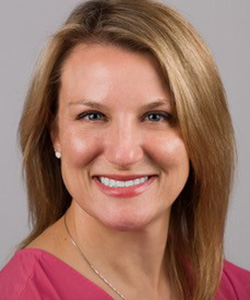
Angeline Lyon
Associate Professor
Department of Chemistry; Department of Biological Sciences
Cardiovascular disease is a growing problem worldwide and the leading cause of death in the United States. Phospholipase C (PLC) enzymes, in particular PLCβ and PLCε, are essential for normal cardiovascular function. My lab uses an innovative combination of X-ray crystallography and cryo-electron microscopy to gain structural insights into PLC regulation and activation.
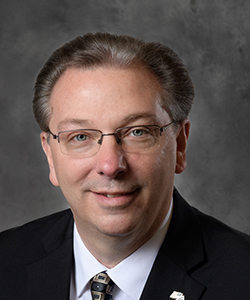
Andrew Mesecar
Distinguished Professor of Biochemistry and Walther Professor in Cancer Structural Biology
Department of Biochemistry; Department of Biological Sciences
The fundamental research interests of the Mesecar lab involve elucidating the molecular mechanisms and function of therapeutic enzymes and proteins. We wish to understand at the molecular level how enzymes and proteins recognize their substrates, catalyze their requisite chemical reactions, and trigger signal-transduction cascades. Our ultimate goal is to utilize this fundamental scientific knowledge to develop new therapeutics to treat cancer and infectious diseases.
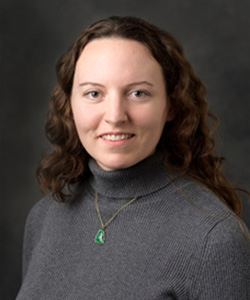
Lauren Ann Metskas
Assistant Professor
Department of Biological Sciences; Department of Chemistry
Large protein ultrastructures are prevalent in biology, with diverse functions ranging from heartbeats to viral infection. While conformations and dynamics of protein monomers in solution have been well studied, their organization and coordinated functions within the complex chemical and physical environments of the cell are less well understood yet critical for the development of medical therapies and biotechnology.
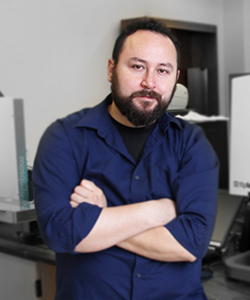
Nicholas Noinaj
Associate Professor
Department of Biological Sciences
My research interests are in understanding how pathogenic Gram-negative bacteria are able to use virulence factors found on their surface to mediate infection. These virulence factors are found in the outer membrane and belong to a class of surface proteins commonly referred to as outer membrane proteins (OMPs). In particular, my lab investigates the multi-component complex called BAM, which is responsible for the biogenesis of all OMPs, in hopes of understanding how it is able to fold and insert OMPs into the outer membrane.
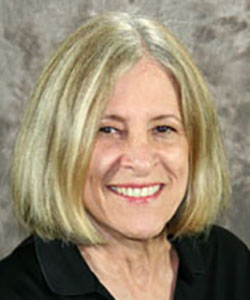
Carol Post
Distinguished Professor of Medicinal Chemistry and Molecular Pharmacology
Borch Department of Medical Chemistry and Molecular Pharmacology; Department of Biological Sciences
We seek to answer fundamental questions related to internal dynamics, energetics and intermolecular interactions of proteins for the purpose of understanding and manipulating their biological function. We use solution NMR and molecular dynamics computation to query protein systems both macroscopically and microscopically.
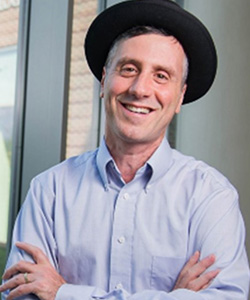
David Sanders
Associate Professor
Department of Biological Sciences
One of the main challenges in gene therapy research is the delivery of the genetic material to particular cells. Retroviruses are most commonly used as the vehicles for inserting genes into the cellular genome. We have designed a set of novel viruses that show great promise for gene therapy.
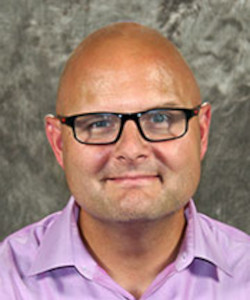
Robert Stahelin
Retter Professor of Pharmacy
Borch Department of Medicinal Chemistry and Molecular Pharmacology
Our research is in lipid-protein interactions during the steps of virus entry, virus replication, and virus assembly and budding. We use an array of biophysical and structural tools to come to quantitative and mechanistic conclusions on how viral proteins hijack host lipids and membranes for their replication cycle.
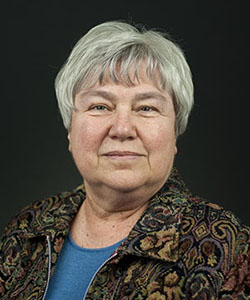
Cynthia Stauffacher
Professor
Department of Biological Sciences
My lab applies x-ray crystallography and molecular biology to systems where proteins work together in membranes to perform a biological function. Cholesterol production in humans begins with the activity of the membrane-associated enzyme, HMG-CoA reductase. We determined the structure of a bacterial analogue of this enzyme. Insights into the mechanisms of activation and inhibition have been gained by also determining the structure in the presence of substrates and the cholesterol-lowering drug Lovastatin, and lead to the possibility for design of new drugs to lower cholesterol.
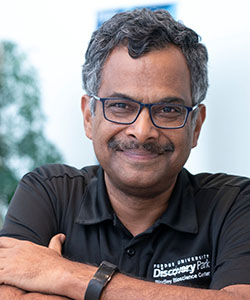
Ramaswamy Subramanian
Professor
Department of Biological Sciences; Weldon School of Biomedical Engineering
The laboratory has a long term interest in understanding the relationship between atomic resolution structures and molecular function. We use X-ray crystallography and electron cryo-microscopy as the primary structure determination tools. We are interested in a wide variety of enzymes and membrane transporters, from both a basic biology perspective as well in their relevance to disease and applications.
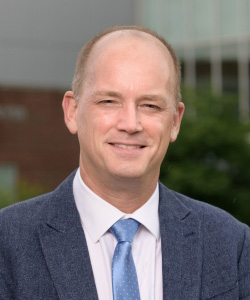
John Tesmer
Walther Distinguished Professor in Cancer Structural Biology
Department of Biological Sciences
My lab studies the molecular basis of G protein-coupled receptor (GPCR)-mediated signal transduction using small-angle X-ray scattering, X-ray crystallography, and single particle cryo-electron microscopy (cryo-EM). By determining structures of signaling proteins alone and in complex with their various targets, we provide important insights into the molecular basis of signal transduction, explain how diseases result from dysfunctional regulation, and leverage this information to develop new therapeutic approaches.
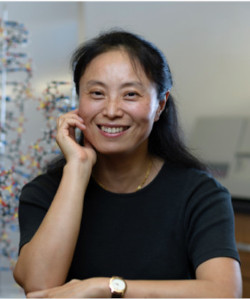
Danzhou Yang
Distinguished Professor of Medicinal Chemistry and Molecular Pharmacology
Borch Department of Medicinal Chemistry and Molecular Pharmacology; Department of Chemistry
My research focuses on the structures and functions of biologically relevant DNA G-quadruplexes formed in the human oncogene promoters and human telomeres and their interactions with small molecules and proteins. We also work on structure-based rational design of anticancer drugs. We use NMR spectroscopy in combination with X-ray crystallography, cryo-EM, and other biophysical methods.

